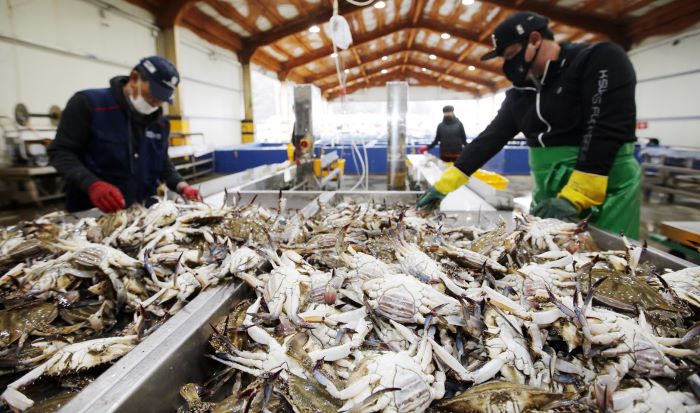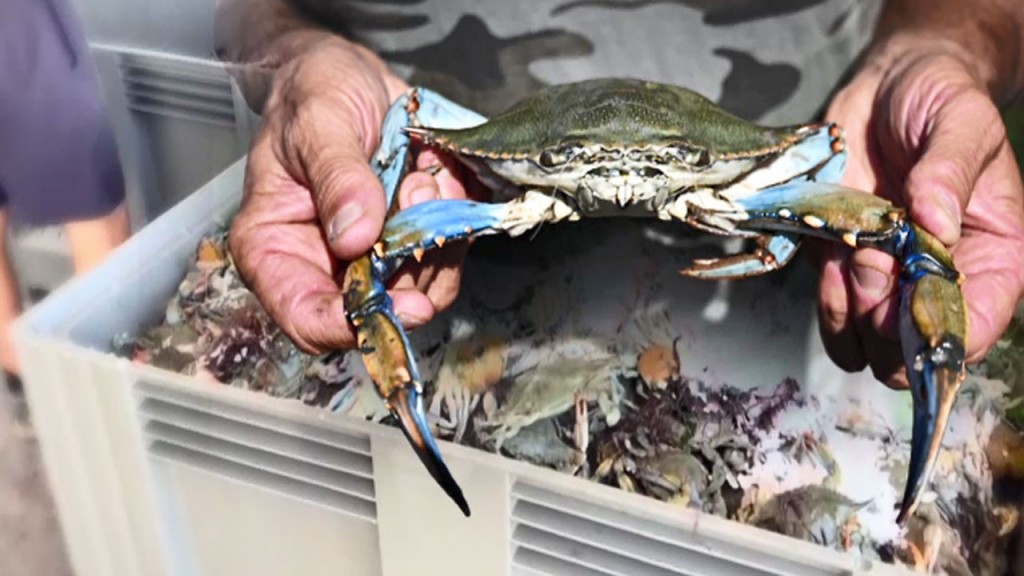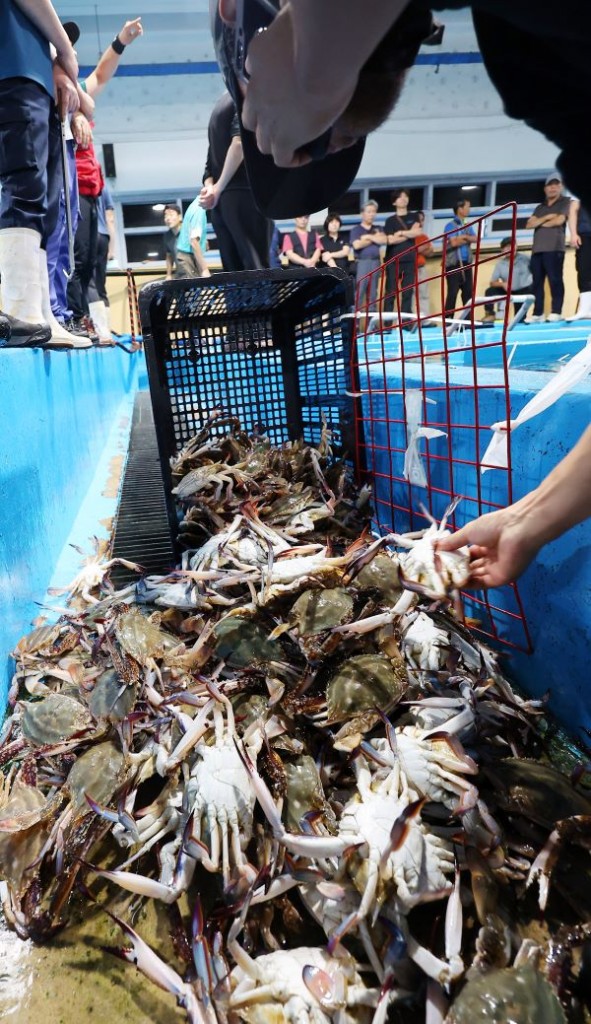
Here, fishermen are busy sorting the freshly harvested blue crabs. Throughout this year’s spring fishing season, spanning from April to June, the catch from the Yeonpyeong Island fishing grounds amounted to 420,000 kilograms, marking a 2.5 percent decrease compared to the 431,000 kilograms captured during the same period last year. (Yonhap)
INCHEON, Sept. 11 (Korea Bizwire) — The revelation that blue crabs, a cherished seafood delicacy in Korea, have become a troublesome presence in Italy has sparked significant interest among Korean food enthusiasts.
In response, the notion of exporting these crabs to other Asian nations, including Korea, has gained traction and is now evolving into a reality.
An importer specializing in crabs located in Incheon, South Korea, has initiated the official process for importing blue crabs from Italy.
A company representative reportedly established contact with the Italian Chamber of Commerce to secure a reliable local partner.
Blue crabs are already being imported from Greece, and the Ministry of Food and Drug Safety has approved them as fit for human consumption. Consequently, Italian blue crabs could grace domestic tables as early as this year.

The blue crab is originally native to the western Atlantic Ocean, but rising water temperatures have facilitated their spread to the Mediterranean coast, including Italy and Spain. Scientists estimate that they can lay up to two million eggs annually. (Image courtesy of Yonhap)
Italian cuisine boasts a rich tradition of shellfish, including clams, but the invasive blue crab (scientifically known as Portunus pelagicus) has posed a significant challenge due to its voracious consumption of these shellfish.
There is even a humorous saying in Italy that suggests the lack of clams could lead to a shortage of vongole pasta.
However, blue crabs are not limiting their culinary preferences to clams alone; they are also devouring mussels, oysters, bream, and eels, putting Italian fish farmers at risk of going out of business.
In fact, the situation has become so dire that in some regions of Italy, a state of emergency has been declared, and rewards have been offered for capturing these invasive blue crabs.
The blue crab is originally native to the western Atlantic Ocean, but rising water temperatures have facilitated their spread to the Mediterranean coast, including Italy and Spain. Scientists estimate that they can lay up to two million eggs annually.
When it was reported that Italy was incurring costs to dispose of these crabs, the reaction in Korea was to consider importing them.

Blue crabs rank among South Korea’s top seafood delicacies. Traders transport prized Yeonpyeong Island blue crabs, acquired through public auctions at a fishery cooperative in Jung-gu, Incheon, on the morning of September 11th, marking the official commencement of the fall blue crab season. (Yonhap)
Some online communities lamented the waste and questioned whether importing them was a viable solution, citing the successful case of Tunisia.
Tunisia faced a similar crisis in 2014 when the blue crab population surged, but it managed to turn this challenge into an opportunity by exporting substantial quantities to various Asian countries, including South Korea, China, Japan, and Thailand, starting in 2017.
Remarkably, Tunisia has become South Korea’s second-largest imported source of blue crabs, following China. According to the Korea Fisheries Trade Association, South Korea imported 12,867 tons of blue crabs in 2022.
Out of this total, 12,472 tons were from China, while 163 tons originated from Tunisia. These crabs are typically imported in either a cut or frozen state.
M. H. Lee (mhlee@koreabizwire.com)





